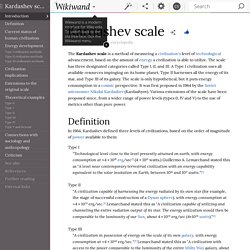

A Mini Farm That Produces Food From Plastic-Eating Mushrooms. Plastic-eating fungi doesn’t look so bad, right?

Katharina Unger According to one recent study, there’s at least 5 trillion pieces of plastic in the ocean. That’s more than 250 tons. So what to do with mountains of plastic waste with nowhere to go? Katharina Unger thinks we should eat it. The Austrian designer partnered with Julia Kaisinger and Utrecht University to develop a system that cultivates edible plastic-digesting fungi. We last wrote about Unger when she was turning fly larvae into edible treats. Unger’s set-up for growing fungi. The tabletop set-up is a mini-factory for cultivating the mycelium (roots) of two fungi strains—Schizophyllum commune and Pleurotus ostreatus, both commonly consumed mushrooms that just so happen to have a voracious appetite for plastic. It’s a bizarre process, but the end product looks surprisingly like something you might want to consume.
It’s important to note that while based in real science, Unger’s Fungi Mutarium is still somewhat speculative. Futuristic Spaceship Illustrations by Adrian Mann. Makezineblog.files.wordpress.com/2012/09/space-plan-scan-touched-up-001.pdf. Kardashev scale. The Kardashev scale is a method of measuring a civilization's level of technological advancement, based on the amount of energy a civilization is able to utilize.

The scale has three designated categories called Type I, II, and III. A Type I civilization uses all available resources impinging on its home planet, Type II harnesses all the energy of its star, and Type III of its galaxy. The scale is only hypothetical, but it puts energy consumption in a cosmic perspective. It was first proposed in 1964 by the Soviet astronomer Nikolai Kardashev (Kardashyov). Various extensions of the scale have been proposed since, from a wider range of power levels (types 0, IV and V) to the use of metrics other than pure power. Definition Type I "Technological level close to the level presently attained on earth, with energy consumption at ≈4×1019 erg/sec[1] (4 × 1012 watts.)
Type II Type III "A civilization in possession of energy on the scale of its own galaxy, with energy consumption at ≈4×1044 erg/sec. Dyson sphere. Variants In fictional accounts, the Dyson-sphere concept is often interpreted as an artificial hollow sphere of matter around a star.

This perception is based on a literal interpretation of Dyson's original short paper introducing the concept. In response to letters prompted by this paper, Dyson replied, "A solid shell or ring surrounding a star is mechanically impossible. The form of 'biosphere' which I envisaged consists of a loose collection or swarm of objects traveling on independent orbits around the star. Dyson swarm A Dyson ring — the simplest form of the Dyson swarm — to scale. A relatively simple arrangement of multiple Dyson rings of the type pictured above, to form a more complex Dyson swarm. The variant closest to Dyson's original conception is the "Dyson swarm". Disadvantages: the nature of orbital mechanics would make the arrangement of the orbits of the swarm extremely complex.
As noted below, such a cloud of collectors would alter the light emitted by the star system. 10 Most Important Science Fiction Books About Superintelligence. Biggest-ever virus revived from Stone Age permafrost - life - 03 March 2014. Video: Watch a resurrected virus infect amoebas As if there weren't enough problems with thawing tundra.

A virus of unprecedented size has been isolated from Russian permafrost 30,000 years old and reactivated. Dubbed a pithovirus after the Greek pithos, meaning a large earthenware jar like an amphora, the virus infects amoebas but does not appear to harm human or mouse cells. Even so, now that this virus has been revived from the permafrost, so too could potentially harmful pathogens, possibly including viruses humans have never encountered before, the researchers say.
"There's good reason to think there could be pathogenic viruses in there too," says Chantal Abergel of Aix-Marseille University in Marseille, France, and co-leader of the team that discovered the virus. Mining risk The pithovirus itself is very different from any known virus. Yet despite being physically larger, the pithovirus has only a fifth as many genes as the 2500 in the pandoravirus. Invasion filmed Viral search.